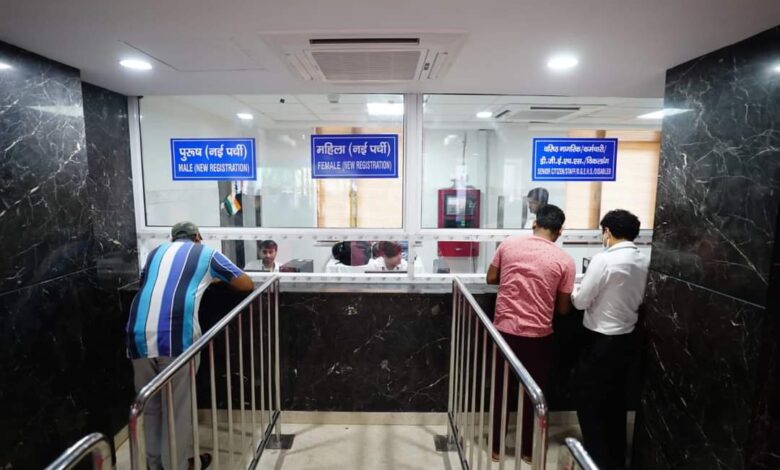Economic Empowerment: 15 Million Nigerian Households to Receive Cash Transfers from the FG by October 2023.
Objectives of the Cash Transfer Initiative: Uplifting Vulnerable Households in Nigeria.

Economic Empowerment: 15 Million Nigerian Households to Receive Cash Transfers from the FG by October 2023
In a landmark development for Nigeria’s socio-economic landscape, the Federal Government (FG) has announced plans to provide cash transfers to approximately 15 million households by October 2023. This significant initiative is set to uplift millions of Nigerians, alleviate poverty, and stimulate economic growth. In this blog post, we delve into the details of this transformative program and its potential impact on households across the nation.

Table of Contents
- Introduction: The FG’s Bold Move
- A Lifeline for Nigerian Households
- The Importance of Cash Transfers
- The Scope of the Cash Transfer Program
- Reaching 15 Million Households
- Targeting Vulnerable Populations
- Objectives of the Cash Transfer Initiative
- Poverty Alleviation
- Economic Stimulus
- Social Safety Net
- Implementation and Logistics
- Registration and Eligibility Criteria
- Disbursement Mechanisms
- Transparency and Accountability
- Impact on Nigerian Households
- Improved Living Standards
- Enhanced Financial Inclusion
- Future Aspirations
- Challenges and Mitigations
- Ensuring Fairness and Equity
- Identifying Genuine Beneficiaries
- Minimizing Leakages
- The Broader Context of Social Interventions
- Complementing Other Programs
- Sustainable Development Goals (SDGs)
- Public Reception and Expectations
- Voices from Communities
- Anticipating the Positive Ripple Effects
- Conclusion: A Path to Prosperity for Nigerian Households
Chapter 1: Introduction: The FG’s Bold Move
A Lifeline for Nigerian Households
The Federal Government’s decision to provide cash transfers to 15 million households is a monumental step toward addressing poverty and supporting vulnerable populations.
The Importance of Cash Transfers
Cash transfers have emerged as a powerful tool for poverty alleviation, offering immediate relief and the potential for long-term economic empowerment.
Chapter 2: The Scope of the Cash Transfer Program
Reaching 15 Million Households
The sheer scale of this program is remarkable, with 15 million households set to benefit from cash transfers.
Targeting Vulnerable Populations
Efforts will be made to target the most vulnerable segments of society, ensuring that those in dire need receive the support they require.
Chapter 3: Objectives of the Cash Transfer Initiative
Poverty Alleviation
One of the primary goals of this initiative is to alleviate poverty by providing financial support to households in need.
Economic Stimulus
Cash transfers can stimulate local economies by increasing household purchasing power and consumption.
Social Safety Net
The program serves as a crucial social safety net, protecting vulnerable populations from falling deeper into poverty.
In the chapters ahead, we’ll explore implementation logistics, the potential impact on households, challenges and mitigations, and the broader context of social interventions in Nigeria.
Stay tuned to learn more about this transformative program that has the potential to uplift millions of Nigerian households and drive positive change throughout the nation.

The Scope of the Cash Transfer Program: A Lifeline for 15 Million Nigerian Households
In a bold and ambitious move to tackle poverty and empower vulnerable communities, the Federal Government of Nigeria has announced plans to provide cash transfers to approximately 15 million households by October 2023. This massive undertaking is poised to make a profound impact on the lives of millions of Nigerians. In this blog post, we’ll delve into the scope and scale of the Cash Transfer Program, shedding light on the reach and significance of this transformative initiative.
Table of Contents
- Introduction: A Beacon of Hope
- Addressing Poverty at Scale
- The Humanitarian and Economic Imperative
- Defining the Scope of the Cash Transfer Program
- The Monumental Scale
- Geographic Coverage
- Targeting Vulnerable Households
- Objectives of the Cash Transfer Program
- Alleviating Poverty
- Promoting Economic Inclusion
- Strengthening Social Safety Nets
- Implementation Logistics
- Registration and Beneficiary Selection
- Payment Mechanisms
- Monitoring and Accountability
- Impact on Households and Communities
- Improved Standard of Living
- Enhanced Financial Resilience
- Community Development
- Challenges and Mitigations
- Identifying Genuine Beneficiaries
- Minimizing Leakages
- Ensuring Equity
- Supporting the Broader Development Agenda
- Aligning with Sustainable Development Goals (SDGs)
- Complementing Other Social Programs
- Public Awareness and Engagement
- Building Trust and Transparency
- Public Reception and Expectations
- Conclusion: A Pioneering Effort to Transform Lives
Chapter 1: Introduction: A Beacon of Hope
Addressing Poverty at Scale
The Cash Transfer Program’s scope is monumental, with 15 million households set to benefit. It reflects the government’s commitment to addressing the pervasive issue of poverty in Nigeria.
The Humanitarian and Economic Imperative
Cash transfers not only alleviate poverty but also stimulate economic activity, making them a potent tool for uplifting communities and fostering prosperity.
Chapter 2: Defining the Scope of the Cash Transfer Program
The Monumental Scale
The scale of this program is unprecedented, aiming to touch the lives of millions of households across Nigeria.
Geographic Coverage
The program will extend its reach to both urban and rural areas, ensuring that vulnerable communities in diverse settings receive support.
Targeting Vulnerable Households
Efforts will be made to identify and prioritize the most vulnerable households, effectively targeting those in the greatest need.
Chapter 3: Objectives of the Cash Transfer Program
Alleviating Poverty
The primary objective is to alleviate poverty by providing direct financial support to households struggling to make ends meet.
Promoting Economic Inclusion
Cash transfers empower beneficiaries to participate in economic activities, thereby fostering economic inclusion and reducing income inequality.
Strengthening Social Safety Nets
The program serves as a critical social safety net, protecting vulnerable populations from slipping deeper into poverty during times of crisis.
In the chapters ahead, we’ll explore implementation logistics, the potential impact on households and communities, challenges, and how this program aligns with broader development goals.
Stay tuned to learn more about this pioneering effort to uplift 15 million Nigerian households and transform lives, one cash transfer at a time.

Objectives of the Cash Transfer Initiative: Uplifting Vulnerable Households in Nigeria
The Cash Transfer Initiative in Nigeria represents a beacon of hope for millions of vulnerable households across the nation. This transformative program, launched by the Federal Government, has clear and compelling objectives aimed at alleviating poverty, fostering economic inclusion, and strengthening social safety nets. In this blog post, we’ll delve into the core objectives of the Cash Transfer Initiative and understand why they are vital for Nigeria’s socio-economic development.
Table of Contents
- Introduction: Changing Lives Through Cash Transfers
- The Impact of Cash Transfers
- Why the Initiative Matters
- The Three Key Objectives of the Cash Transfer Initiative
- Alleviating Poverty
- Promoting Economic Inclusion
- Strengthening Social Safety Nets
- Objective 1: Alleviating Poverty
- Poverty in Nigeria: A Persistent Challenge
- How Cash Transfers Make a Difference
- Objective 2: Promoting Economic Inclusion
- Empowering Vulnerable Households
- The Ripple Effect on the Economy
- Objective 3: Strengthening Social Safety Nets
- The Role of Social Safety Nets
- Enhancing Resilience in Vulnerable Communities
- Implementation Strategies and Mechanisms
- Identifying Beneficiaries
- Payment and Monitoring Systems
- Ensuring Transparency
- Measuring Success: The Impact on Households
- Improved Living Standards
- Enhanced Financial Security
- Community Development
- Challenges and Mitigations
- Identifying Genuine Beneficiaries
- Minimizing Leakages
- Ensuring Equity
- Aligning with Broader Development Goals
- Contributing to Sustainable Development
- Complementing Other Social Programs
- Conclusion: A Pathway to Prosperity and Inclusion
Chapter 1: Introduction: Changing Lives Through Cash Transfers
The Impact of Cash Transfers
Cash transfers have proven to be an effective tool in reducing poverty, improving livelihoods, and stimulating economic activity in vulnerable communities.
Why the Initiative Matters
The Cash Transfer Initiative in Nigeria holds significant promise, with the potential to positively impact the lives of millions and drive broader socio-economic development.
Chapter 2: The Three Key Objectives of the Cash Transfer Initiative
Objective 1: Alleviating Poverty
– Poverty in Nigeria: A Persistent Challenge: Nigeria has struggled with high levels of poverty, making poverty alleviation a primary objective of the initiative.
– How Cash Transfers Make a Difference: Cash transfers provide immediate relief to households in need, enabling them to meet basic needs and invest in their future.
Objective 2: Promoting Economic Inclusion
– Empowering Vulnerable Households: By providing financial support, the initiative empowers vulnerable households to participate in economic activities and escape the cycle of poverty.
– The Ripple Effect on the Economy: Economic inclusion has a cascading effect on local economies, boosting consumption and fostering economic growth.
Objective 3: Strengthening Social Safety Nets
– The Role of Social Safety Nets: Social safety nets protect vulnerable populations during times of crisis and provide a crucial cushion against economic shocks.
– Enhancing Resilience in Vulnerable Communities: Strengthening social safety nets enhances the resilience of vulnerable communities and safeguards their well-being.
In the chapters ahead, we’ll explore the implementation strategies, the measurable impact on households, challenges, and how this program aligns with broader development goals.
Stay tuned to discover how the Cash Transfer Initiative is changing lives and paving the way for prosperity and inclusion in Nigeria.
Implementation and Logistics of Nigeria’s Cash Transfer Initiative
The implementation and logistics of Nigeria’s Cash Transfer Initiative are crucial elements that determine the program’s effectiveness in reaching and uplifting vulnerable households. This transformative initiative by the Federal Government aims to alleviate poverty, promote economic inclusion, and strengthen social safety nets. In this blog post, we’ll dive into the intricacies of the implementation process, including registration and beneficiary selection, payment mechanisms, and ensuring transparency and accountability.
Table of Contents
- Introduction: Turning Objectives into Action
- The Vision of the Cash Transfer Initiative
- The Importance of Smooth Implementation
- Registration and Beneficiary Selection
- Identifying Vulnerable Households
- Registration Process
- Data Management and Security
- Payment Mechanisms
- Direct Cash Transfers
- Digital Payment Platforms
- Ensuring Accessibility
- Monitoring and Accountability
- Tracking Beneficiary Progress
- Preventing Fraud and Abuse
- Involving Local Communities
- Transparency in Implementation
- Open Data and Reporting
- Engaging Civil Society Organizations
- Public Awareness
- Challenges and Mitigations
- Identifying Genuine Beneficiaries
- Minimizing Leakages
- Ensuring Equitable Access
- Scaling and Expanding Reach
- Challenges of Scale
- Lessons from Successful Expansion
- Measuring Impact
- Assessing Program Success
- Long-Term Effects on Communities
- Data-Driven Decision-Making
- Conclusion: Navigating the Path to Prosperity
Chapter 1: Introduction: Turning Objectives into Action
The Vision of the Cash Transfer Initiative
The Cash Transfer Initiative in Nigeria is guided by clear objectives, and successful implementation is essential to realizing its vision of poverty alleviation and economic inclusion.
The Importance of Smooth Implementation
The effectiveness of the program in improving the lives of vulnerable households hinges on the seamless execution of its implementation and logistics.
Chapter 2: Registration and Beneficiary Selection
Identifying Vulnerable Households
Efforts are made to target the neediest households, and a robust system for beneficiary identification is put in place.
Registration Process
Beneficiaries go through a registration process to ensure they meet the eligibility criteria and can receive the cash transfers.
Data Management and Security
Safeguarding beneficiary data is critical to maintaining their privacy and protecting against potential misuse.
Chapter 3: Payment Mechanisms
Direct Cash Transfers
Cash transfers are provided directly to beneficiaries, ensuring they have control over how the funds are used.
Digital Payment Platforms
Utilizing digital payment methods enhances efficiency and accessibility, especially in remote areas.
Ensuring Accessibility
Efforts are made to ensure that beneficiaries, including those in remote areas, can access their funds conveniently.
In the chapters ahead, we’ll explore monitoring and accountability, transparency, scaling, and the measurement of impact.
Stay tuned to understand how the Cash Transfer Initiative is navigated from vision to action, ultimately creating pathways to prosperity for Nigeria’s vulnerable households.








If solme oone wishe expert virw concefning running a bloig afterrward i advis him/her to visit this weblog,
Keep up tthe good work.
I know this if off topic but I’m looking into starting my own weblog and was wondering what all is needed to get setup? I’m assuming having a blog like yours would cost a pretty penny? I’m not very internet smart so I’m not 100% certain. Any suggestions or advice would be greatly appreciated. Cheers
Postby artgeek » Mon Oct 28, 2013 3:12 pm You’ll want to choose a tool that suits your own art skills: if you are learning to make art, or working in 2D or 3D for the first time, think about how accessible a tool might be for you. There are plenty of options on this list that are suitable for beginners: in fact, many if not most of these free tools are a great starting place. For the most powerful and complex tools, definitely spend time with tutorial resources, linked in each tool’s entry. “I felt this was what I had been searching for. It was an all encompassing course that taught marketing, outreach, artwork, and yes even game development! This course is delivering above and beyond and I’m extremely motivated and excited to release my first game as soon as I can!” “It’s the easiest way for a designer to collaborate remotely with the rest of the team in a 3D environment.”
https://www.bitsdujour.com/profiles/iZyxt7
Which are the best programming languages for video game development? At a time when learning programming languages is proving to be even more useful than before – what with the world turning increasingly to the digital realm to communicate in the post-Covid19 era – this question has assumed more significance too. For not only has interaction moved to the virtual world but the time spent on gadgets – including gaming devices – has shot up as well. And this has only translated into a greater demand for video games as they can easily be played online from the comfort and safety of one’s home. A language for programming games, script, or code, is the system used by game programmers to shape the settings and mechanics of a game. That is, it represents the machinery that makes a video game work in a certain way.